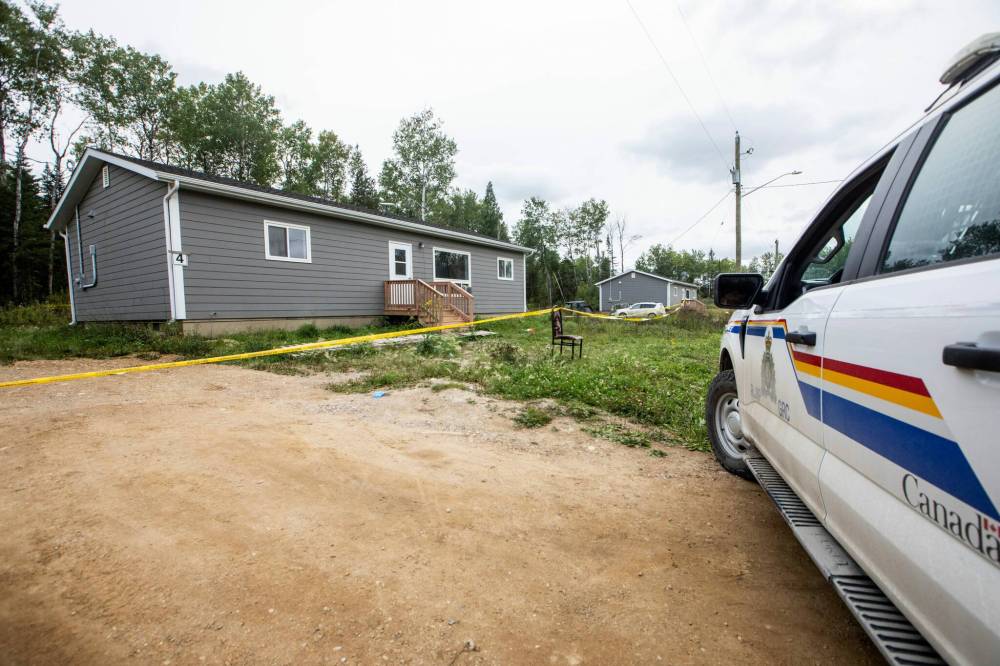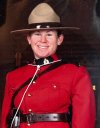Searching for answers in wake of horror
Advertisement
Read this article for free:
or
Already have an account? Log in here »
To continue reading, please subscribe:
Monthly Digital Subscription
$0 for the first 4 weeks*
- Enjoy unlimited reading on winnipegfreepress.com
- Read the E-Edition, our digital replica newspaper
- Access News Break, our award-winning app
- Play interactive puzzles
*No charge for 4 weeks then price increases to the regular rate of $19.00 plus GST every four weeks. Offer available to new and qualified returning subscribers only. Cancel any time.
Monthly Digital Subscription
$4.75/week*
- Enjoy unlimited reading on winnipegfreepress.com
- Read the E-Edition, our digital replica newspaper
- Access News Break, our award-winning app
- Play interactive puzzles
*Billed as $19 plus GST every four weeks. Cancel any time.
To continue reading, please subscribe:
Add Free Press access to your Brandon Sun subscription for only an additional
$1 for the first 4 weeks*
*Your next subscription payment will increase by $1.00 and you will be charged $16.99 plus GST for four weeks. After four weeks, your payment will increase to $23.99 plus GST every four weeks.
Read unlimited articles for free today:
or
Already have an account? Log in here »
In the mid-1980s, during a confidential survey of 60 random citizens in Hollow Water First Nation, researchers were shocked to discover that 40 of them had been sexually abused as children, often in residential or day schools.
One-third of those polled, 20, had sexually victimized others.
In 2001, another group of researchers from the federal Aboriginal Corrections Policy Unit were questioning Hollow Water citizens about the high amount of violence in the community.

MIKAELA MACKENZIE / FREE PRESS
RCMP investigate the scene on Sibi Drive in Hollow Water First Nation after Thursday’s stabbing rampage.
The vast majority blamed alcohol and drugs and “house parties” on the reserve, with community members pointing out that the community’s 70 per cent unemployment rate — caused by federal policies like the Indian Act — were deep contributing factors.
The overwhelming conclusion of the research was that “intergenerational effects of colonialism” was the primary cause for violence in Hollow Water between its residents.
As the research reported, in Hollow Water “post-traumatic stress is evident and the ripples of pain are still being expressed. One Hollow Water resident, in particular, (described to us) how the abused, in turn, abuse.”
Almost 25 years after that, early Thursday morning, an almost unbelievable tragedy occurred, as a 26-year-old man from Hollow Water stabbed eight community members, including his 18-year-old sister, who died.
We may never know why Tyrone Simard did what he did. Simard, who was driving a stolen vehicle, died in a collision with an RCMP cruiser that was racing to Hollow Water to respond to the crime. The female Mountie was critically injured.
I’m going to bet, though, that the reasons for what happened can be explained in the nearly half-century of reports.
I know a lot about Hollow Water First Nation – also called Wanipigow in the Anishinaabe language — a small community on the east side of Lake Winnipeg with 1,100 people (with another 1,000 or so who live off-reserve).
I am a Simard, too. My great-grandmother was born in nearby Manigotagan. I am related to many people in Hollow Water and have been there many times.
The community is served by the RCMP detachment in Powerview-Pine Falls, an hour’s drive away, and has a kindergarten-to-Grade 12 school, a health centre, a number of housing units, a day care, a training program, and a few businesses.
Like most First Nations reserves, there are paved roads but also several dangerous, gravel roads. And, like most Indigenous communities, there is deep, lasting poverty among community members who make ends meet by harvesting traditional foods.
There is a strong, albeit small, set of mental health programs — particularly the Community Holistic Healing Circle – dedicated to mental health and supporting the reintegration of offenders into community — but it is a proverbial drop in the bucket when it comes to the kinds of services Hollow Water needs.
In Hollow Water, there are many strong, proud, and resilient people with abundant culture and language, but an equal number who have unresolved trauma, struggle, and pain — all documented in nearly half a century of research that has rarely found caring eyes.
My point, while it is admittedly early in the investigation in Hollow Water, is that it is a virtual guarantee that the reasons for what happened will be the same as an eerily similar event in Saskatchewan three years ago.
On Sept. 4, 2022, 32-year old James Smith Cree Nation citizen Myles Sanderson killed 11 community members and injured 17 others, eventually dying in police custody.
Sanderson had a long history of perpetrating brutal assaults, including 59 convictions for violence and crimes.
He was also a victim of abuse and domestic violence while growing up in his community.
His upbringing led to an early addiction to drugs and alcohol, which he used to cope. This resulted in addictions that spiraled out of control and deep, unresolved, and overwhelming mental health issues.
In the final report by Correctional Services Canada investigating why Sanderson, who was on statutory release from another assault, suddenly burst into violence, the CSC claimed there were: “no indicators or precipitating events that were known to correctional service and parole board staff that could have acted on to prevent the tragedy.”
Perhaps they’re right, for what happened to Sanderson and why he ended up doing what he did is more likely explained in what happened many years earlier.
Sanderson inherited a legacy of residential schools, land theft, the Indian Act, and so much more. None of this is an excuse for harm but is an explanation for it — and things he needed help to deal with.
Infrastructure on First Nations is under-resourced, under-funded, and long-neglected by governments.
In a long list of things lacking on First Nations, though, mental health services that are culturally centred and community-led — and explain why things are the way they are and how to find paths to healing — are clearly absent.
Just read the reports. Or, the tragedies will tell you to.
niigaan.sinclair@freepress.mb.ca

Niigaan Sinclair is Anishinaabe and is a columnist at the Winnipeg Free Press.
Our newsroom depends on a growing audience of readers to power our journalism. If you are not a paid reader, please consider becoming a subscriber.
Our newsroom depends on its audience of readers to power our journalism. Thank you for your support.
History
Updated on Friday, September 5, 2025 9:12 AM CDT: Minor copy editing change









